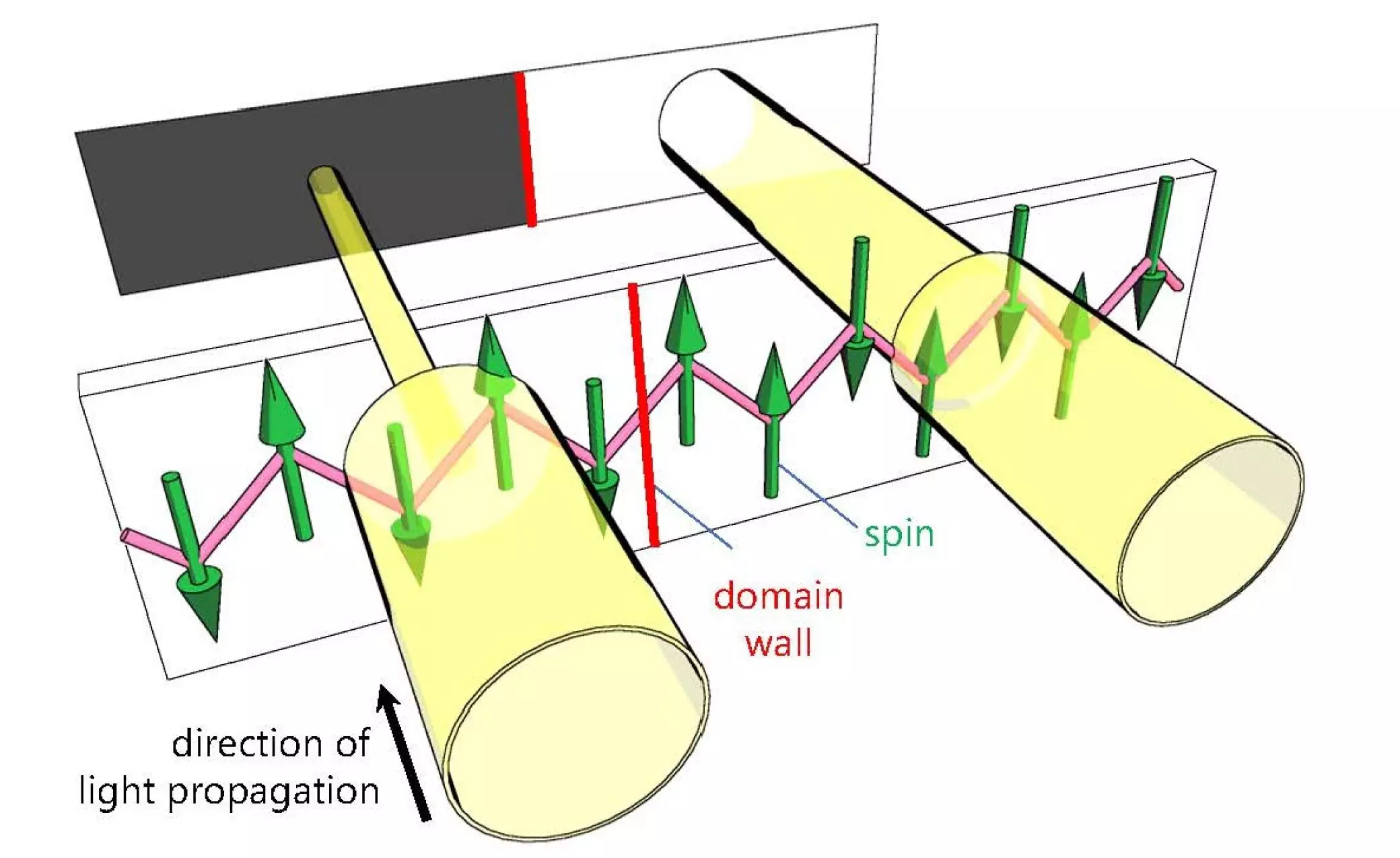In a groundbreaking study, researchers from Osaka Metropolitan University and the University of Tokyo have moved the field of quantum magnetism another step forward by visualizing and manipulating magnetic domains within a specialized quantum material using light. Published in Physical Review Letters, their research not only showcases a novel intersection of optics and magnetism but also presents exciting possibilities for future technological innovations. By illuminating tiny magnetic regions and deftly adjusting them with an electric field, these scientists have unlocked a deeper understanding of magnetic phenomena at the quantum level.
As the world grows ever more reliant on advanced technologies, the intricacies of magnetic materials remain an essential area of inquiry. While many are familiar with common magnets that can cling effortlessly to metal surfaces, the spotlight now turns to antiferromagnets—materials that present a unique challenge due to their distinct magnetic behavior. As researchers delve into the realm of antiferromagnetism, they unveil a new cousin to traditional magnetism, introducing intriguing implications for next-generation electronics and data storage devices.
Understanding Antiferromagnets: The Nonconformists of Magnetism
Antiferromagnets are a class of materials characterized by their unique arrangement of magnetic spins, where neighboring atoms spin in opposite directions, effectively canceling each other out to produce no observable net magnetic field. This absence of a defined north or south pole sets antiferromagnets apart from their more familiar ferromagnetic kin. As a result, antiferromagnets have garnered the attention of technology developers intrigued by their potential applications.
Particularly notable is the segment of antiferromagnets with quasi-one-dimensional quantum properties, where magnetic interactions are localized predominantly along atomic chains. These materials promise to revolutionize electronics, but challenges abound. Observing their magnetic domains can be cumbersome due to low magnetic transition temperatures and diminutive magnetic moments, leading to difficulties in understanding their behavior.
Innovative Observation Techniques: A New Frontier in Quantum Studies
In response to these challenges, the research team took a daring approach to observing the magnetic domains within the quasi-one-dimensional antiferromagnet BaCu2Si2O7. They leveraged a phenomenon known as nonreciprocal directional dichroism, which observes changes in light absorption based on the direction of light and magnetic moments. This innovative method allowed researchers to reveal the unseen—the coexistence of opposite magnetic domains within a single crystal, notable for their organization along specific atomic chains.
Kenta Kimura, an associate professor and lead author of the study, emphasized the significance of direct observation in scientific understanding: “Seeing is believing, and understanding starts with direct observation.” The ability to visualize magnetic domains marks a paradigm shift, offering researchers a unique perspective on the intricate world of quantum materials and their behaviors.
Moreover, the researchers did not stop at mere observation; they demonstrated the capacity to maneuver these domain walls using electric fields through a phenomenon called magnetoelectric coupling. This groundbreaking interplay between electric and magnetic properties opened doors to further manipulation, revealing that the domain walls retained their original direction even while in motion. Kimura envisions the potential for this optical microscopy technique to enable real-time visualization of moving domain walls, significantly impacting our understanding of quantum materials.
The implications for technology could be enormous. The research not only enhances the understanding of quantum materials but also paves the way for new generations of electronic devices. By applying the observation methods developed in this study to various antiferromagnetic materials, researchers may glean insights into the effects of quantum fluctuations on magnetic domain behavior, potentially guiding the design of next-gen electronic components powered by antiferromagnetic properties.
The work undertaken by the Osaka Metropolitan University and University of Tokyo teams exemplifies an essential leap forward in quantum materials research. As they unlock the secrets of antiferromagnetic domains, they open up a world of possibilities for advanced technology and material science. This study not only showcases the power of innovative observation techniques but also underscores the collaborative efforts required to navigate the complex landscape of quantum magnetism, setting the stage for a brighter, more technologically advanced future.

